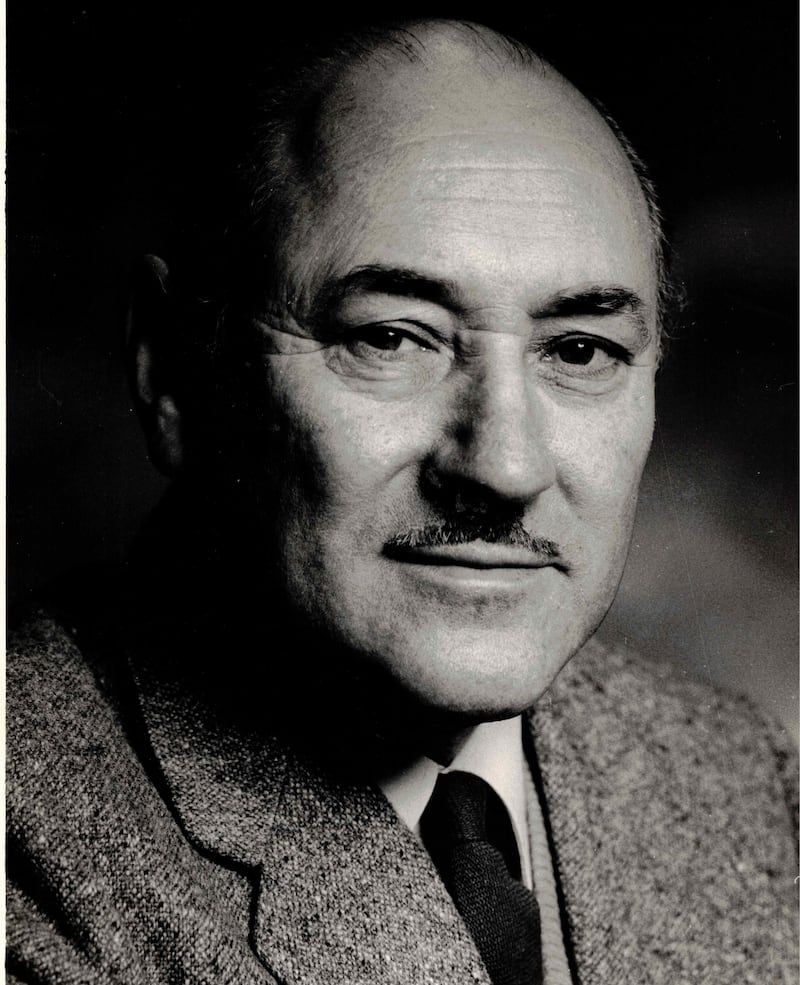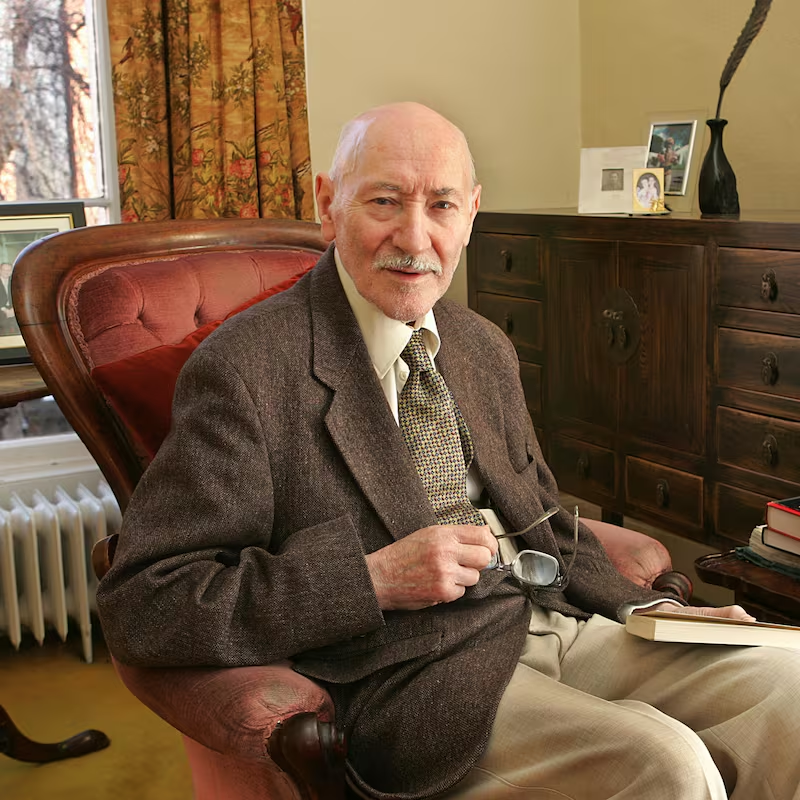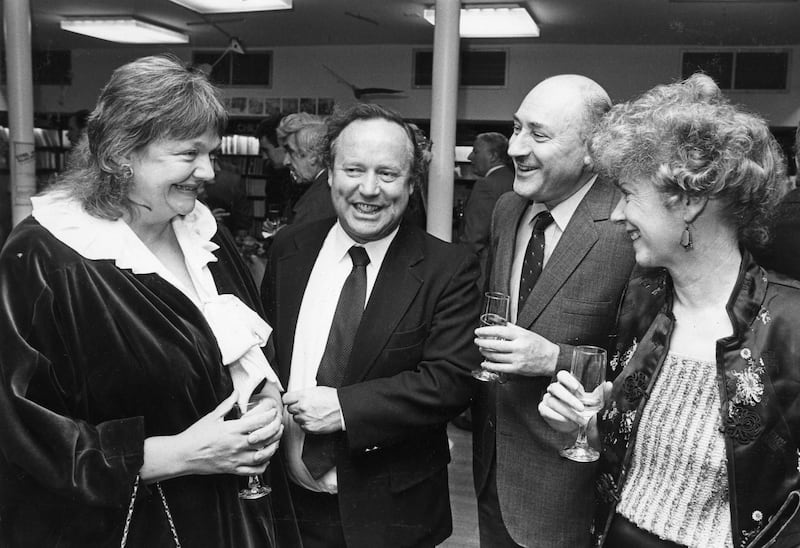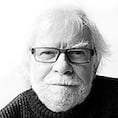It is very tempting to call it a golden age of Dublin journalism, and many of us who experienced it would do so. It was an era of much crossover between the literary and journalistic in the city’s newspapers. Central to that memory is the role of David Marcus at the Irish Press, first as begetter of the weekly New Irish Writing page and then adding literary editor to his responsibilities at Burgh Quay.
The page, distinctively branded between news and sport, was a much-anticipated weekly read, with contributions from both established and emerging short-story writers and poets. His prediction in a letter to his parents in April 1968 that it would “quickly establish itself as something people will look forward to every Saturday” was realised in the first weeks of its appearance. While the concept was something of a revival of the Irish Writing periodical that David had founded in Cork in 1946, the “crazy idea”, as he called it, of a creative-writing page in a daily newspaper was radical and brave.
My own first memory of New Irish Writing was the discovery of a writer who became one of my gold standards in Irish fiction: John McGahern. His short story Strandhill, the Sea inaugurated the page. It would be no exaggeration to suggest that many of the poets and short-story writers of my own generation who began publishing in late 1960s and 1970s had their first, or one of their first, outings in New Irish Writing.
Having been a schoolboy reader of the page through the summer of 1968 – the summer I first “dabbled in verse” – I decided, with the bravado and naivety of youth, to submit some of my apprentice efforts to the New Irish Writing editor that October. A cautiously worded response came from David in November, saying he wished to see more “before coming to any kind of decision”. The request was for 10 or 12 poems – he was not taking any chances on a novice.
RM Block
In time for Christmas I received word that he was keeping five of the poems to publish, “not all at the same time”. In fact all five appeared together, with a story by Elizabeth Bowen, the following month, on January 18th, 1969. The two-guinea fee for each poem was a bonus – but seeing my work stand alongside a writer of Bowen’s stature was the real thrill.
It could be said that the seeds of my own future, and my future relationship with another newspaper with literary credentials, were sowed that Saturday. Encouraged by my publication in New Irish Writing, I continued to place poems here and there in magazines and journals. In the summer of 1970 I needed a job. My then short career as a published poet, initiated by David, brought me into contact with the architect and poet Niall Montgomery. That man of many gifts arranged for me to meet the editor of The Irish Times, Douglas Gageby.
Montgomery had been a close friend of the paper’s iconoclastic Cruiskeen Lawn columnist, Flann O’Brien (writing as Myles na gCopaleen). Gageby initially announced to me that “the last thing this newspaper needs is another [expletive] poet”. But he then introduced me to the chief subeditor, Noel Fee, to whom I wisely said nothing about being a poet, though it soon became clear that the essential possessions of the subeditor were the same as those of the poet – a good dictionary and a well-stocked mind.

The irony in this is that I was successful in gaining a foothold, as a trainee subeditor, at a newspaper that had been advertising itself as “the most widely read setting for contemporary Irish poetry”, while David’s attempt to find a home there for his New Irish Writing project was unsuccessful.
When he called in to The Irish Times “unannounced”, as he writes in his memoir, to sell the idea of a new-writing section, it seems he was doing so at a time of day when no one with the authority to hear his proposal was available to meet him. A stroke of good luck for a competitor, the Irish Press, and, I believe, a lost opportunity for the newspaper that was to become my habitat for the next 40 years.
I doubt if ever again I had so good and attentive a reader and been the beneficiary of such astute and meaningful guidance
— Gerard Smyth on David Marcus
David, however, found a home in a newspaper that had already been host to eminent literary men: the novelist Benedict Kiely had been its literary editor and Brendan Behan, before fame as a dramatist, author of a column now regarded as a treasury of that period in Irish life. The Press had also given the untameable Patrick Kavanagh a column under the pseudonym Piers Ploughman.
Cross-fertilisation between the literary and journalistic worlds was part of the everyday in the newspaper office and on the pages. The Irish Times into which I stepped still retained more than a vestige of what its then deputy editor, the poet Bruce Williamson, called its “enclave of magnificent Bohemianism”.
Voices from the literary world were to be found not only on the books pages: the Irish-language poet Seán Ó Riordáin wrote a column for the paper, as did Anthony Cronin, whose weekly Viewpoint was regarded by one young reader, Dermot Bolger, as “a ray of subversive light”. The Belfast playwright Stewart Parker became the paper’s first rock columnist, reviewing the latest album releases in his High Pop column, which in later years the poet Gerald Dawe praised as “a kind of mini-history, a fascinating overview of popular music before business took over the music”.
Perhaps the most authentic Bohemian in the office was George Hodnett, aka Hoddy, who reviewed live music events. Hoddy was the composer of the ballad Monto, which was recorded by The Dubliners, but probably best known for his association with the innovative Pike Theatre, one of whose founders, Carolyn Swift, was the paper’s dance critic.

When the Press went into terminal decline in the 1990s and The Irish Times was fortunate in gaining several of its staff, it was a revelation to discover how many literary men and women had been attending to the daily and nightly production of the Press titles: John Banville, who had been chief sub and later became Irish Times literary editor, the Joycean scholar Terence Killeen and Mary Morrissy, now one of our finest novelists and short-story writers. The Press subs’ desk also had its poets – including John Boland, Hugh McFadden and Brian Lynch.
[ Mary Morrissy: ‘Journalism taught me to spot hidden stories’Opens in new window ]
David’s experiences as an editor working closely on the production of his pages, as recorded in Oughtobiography, resonate with my own at The Irish Times. “What I found most enjoyable,” he wrote, “was that I spent a lot of time in the caseroom, where I soon formed warm friendships with the overseers, Linotype operators and the men of the stone”.
The stone and caseroom as well as the creed room, a kind of nerve centre with machines dispensing news from around the world, were each subdivisions of that bygone newspaper office, each domain a law unto itself in those highly unionised days. Those of us from the editorial side had to watch our step, yet there was a bond of pride, as David discovered, in the nightly miracle.
The multiple responsibilities of the literary editor – choosing which books to review, finding appropriate reviewers, assessing, editing and then proofreading reviews, and, no doubt, after some reviews appeared in print, dealing with irate authors – did not prevent David from nurturing young writers.
Many can testify to the care he took with their work, his responses a measure of his dedication to encouraging nascent talent. Despite a considerable inflow of correspondence, he often took the trouble to provide considered and sometimes lengthy responses, particularly to those whose writing careers he kick-started and whose development he closely followed. It turned out that my New Irish Writing debut, and his enthusiastic reaction to my poems, did not guarantee future easy entry on to his page. In a long letter to me two years after my first poems appeared, he was forthright and intuitive in expressing how he saw the poems I was then writing.
“You are, as it were, trying to take on a different sort of poet on his ground instead of working outward from your own base. You had a voice that was yours alone and that voice was your individuality. No one else could have written your earlier poems – almost anyone could have written this group.”
I doubt if ever again I had so good and attentive a reader and been the beneficiary of such astute and meaningful guidance.
Meanwhile, at The Irish Times, “that warm, indescribably dusty burrow”, as another office Bohemian, Elgy Gillespie, so accurately described it, I was beginning to understand Gageby’s comment that the last thing the paper needed was another poet. His legendary and unconventional predecessor, RM Smyllie, had, of course, established strong links between the paper and Dublin’s artistic circles, especially the poets WB Yeats, FR Higgins and Austin Clarke. In ensuring a literary presence in a newspaper setting, Smyllie and Marcus were kindred spirits. Smyllie’s pride in the paper’s continuous publication of a weekly poem (which has continued for more than 100 years) is evident in his introduction to an Irish Times anthology published in 1948, in which he wrote that the newspaper “can claim a unique wartime record in respect of its weekly literary page. An original poem has appeared on this page virtually every week throughout the war”.

The Irish Times of the early 1970s, like the Irish Press, continued to have its coterie of established and aspiring literati, its dabblers in verse. Gageby’s deputy, the Belfast-born Williamson, was, as my colleague Conor O’Clery once described him, “the sedentary poet and much-loved wordsmith”. Terence de Vere White, a notable novelist and biographer, was the refined and dapper literary editor never without an open book in his hands as he ambled through the office. A solicitor by profession, he stood out as the only man in the office to wear a bow tie.
There were others with literary pedigrees. The erudite features editor and visual-arts critic Brian Fallon, a writer with an encyclopaedic knowledge of both the literary and visual-arts worlds, was son of the poet Padraic Fallon. His sidekick, Fergus Linehan, had a run of theatrical successes.
My chief mentor, who taught me the subeditor’s craft, was Peter Tynan-O’Mahony, a nephew of the poet Katharine Tynan and proud custodian of her literary legacy. Although the young poet Eavan Boland was not on staff, she was a regular contributor and presence, brilliantly combining the dual occupations of poet and literary journalist.
Others would later make the transition from newsprint to literary acclaim: Nuala O’Faolain, who turned memoirist and novelist, and the poet Katie Donovan. Probably the most significant addition to the paper’s literary ranks was Caroline Walsh, who began as a reporter. She would not only become one of the paper’s finest literary editors but also encourage the publication of short stories and establish a place for them in the features pages.
It was no great surprise that she knew this art form intimately and with an instinctive love of the genre: her mother, Mary Lavin, was one of its supreme practitioners. Caroline’s former teacher Maeve Binchy, appointed women’s editor in 1970, was soon to become an internationally popular fiction writer. A young Roddy Doyle spent the summers of 1975 and 1976 as a copy boy in the newsroom and sports department.
[ Rereading Maeve Binchy — as loved and relevant as everOpens in new window ]
David’s legacy lives on not only in the fiction writers he brought into the light but also in the Poetry Ireland Review, a successor to the original Poetry Ireland, which he established as an offshoot of Irish Writing in the 1940s. It should not be forgotten, as George O’Brien reminds us in his introduction to David’s volume Lost and Found, that “as well as his many other literary accomplishments David Marcus is also a poet”. It was as a poet he had his first engagement with The Irish Times when it published his translation of The Yellow Bittern in 1945.
His unfruitful visit to the paper in 1968 was not the end of his attempts to bring New Irish Writing into the pages of the newspaper. In Buried Memories, his second memoir, he recounts a further attempt in 1990, in the wake of the demise of the Irish Press, to convince The Irish Times to take on publication of a weekly short story.
David’s persistence has to be admired: his correspondence with Gageby’s successor as editor, Conor Brady, continued until 1998. Nor does The Irish Times connection end there. In 2015, 47 years after David was diverted from The Irish Times to the Irish Press with his “crazy idea”, New Irish Writing finally landed as a monthly section of The Irish Times. Alas David had not lived to see his great contribution to Irish literary life in the home he’d originally envisaged for it.
The article is from David Marcus: Editing Ireland, edited by Paul Delaney and Deirdre Madden and published by the Stinging Fly Press to mark the centenary of Marcus’s birth























